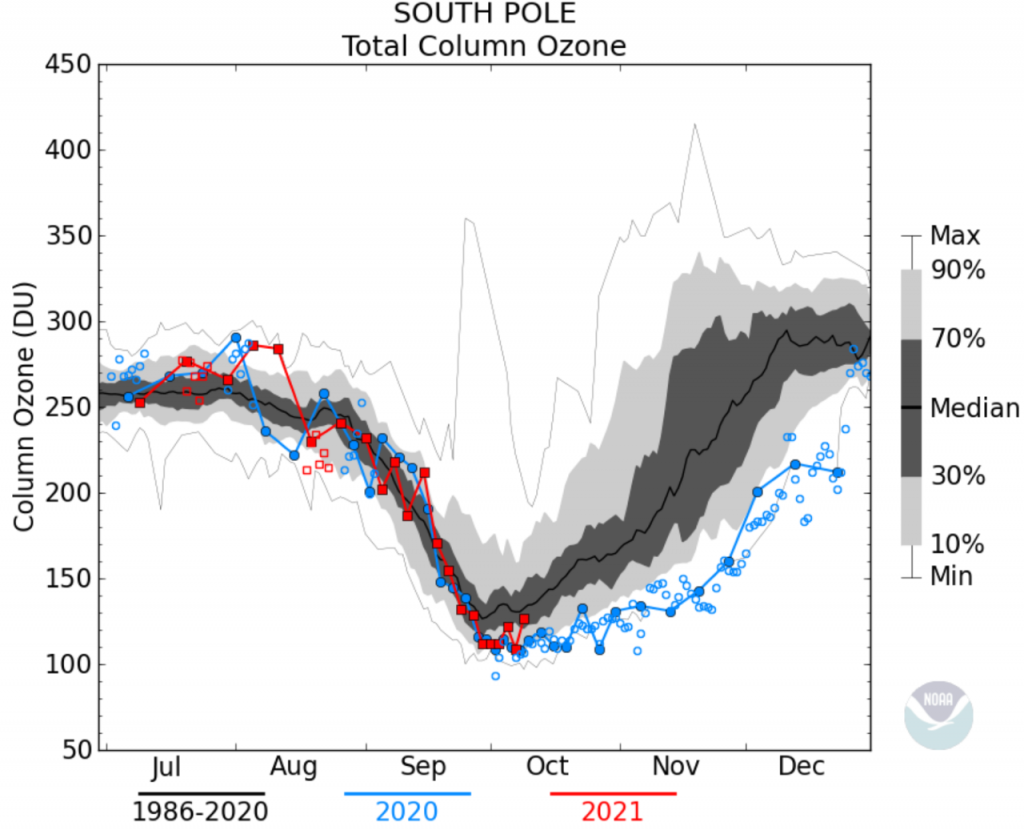By Patrick Cullis and Irina Petropavlovskikh, CIRES and NOAA scientists
Meteorological conditions (speed of the winds, temperatures, and planetary wave activities) determine the size and year-to-year variability of ozone depletion. Because meteorological conditions this year are similar to last year, (no surprise) we’re seeing similar depletion in stratospheric ozone.
It’s important to note that the development of this year’s ozone hole is what we expect to see when ozone-depleting substances that have a long life (on the order of 100 years) continue to create ozone holes over Antarctica until they are naturally removed from the atmosphere—which we predict could happen in 40 or so years. However, the ozone hole this year (and last year) would have been much larger, and the depletion could have been much stronger, if the production of ozone-depleting CFCs continued as it did before the Montreal Protocol and the U.S Clean Air Act were enacted and prohibited production of ozone-depleting substances.
Now, on to our update.
Through the end of September, ozone disappeared from large swaths of the stratosphere above Antarctica as the return of sunlight activated chlorine and set off a catalytic chain reaction of destruction. The largest concentration of atmospheric ozone—located in the ozone layer between 14-21 km above Earth—became a fraction of its normal self.

In the plots above, the red lines are the 2021 ozonesonde measurements for Ozone and Temperature. For comparison, the grey envelopes show the 1991-2012 averages. Note the unusually cold air temperatures—that’s a sign of the strong polar vortex. These conditions are optimal for record-breaking ozone depletion, so it’s somewhat reassuring to actually not be breaking those records!

The plot above is a time series of Total Column Ozone measurements, with 2020 and 2021 highlighted, and the open circles representing measurements taken with the Dobson Spectrophotometer at the South Pole’s Atmospheric Research Observatory. As we said before, these two years have occurred under near ideal atmospheric conditions for ozone destruction, yet their minimums did not reach the sub-100DU levels seen six times between 1993-2009.
Because the polar vortex remains stable and centered over Antarctica, there may still be a chance to measure a new minimum for the year. That’s what happened in 2020, when low measurements persisted into late November. But as the days go on, the newly returned sunlight will eventually destabilize the polar vortex, and high ozone from the mid-latitudes will mix back over Antarctica, filling in the ozone hole until next year.
